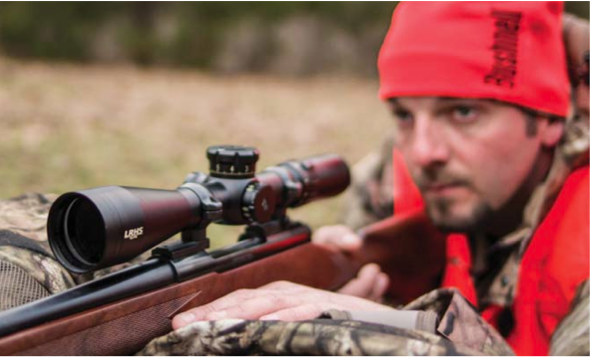
Jack O’Connor was North America’s original gun writer, and I still enjoy reading his works and think that much of his shared knowledge is still relevant today.
By Brad Fenson
Back in the early days, he shot a rifle equipped with open sights and would try to “push up a deer” so he could shoot it on the run. For him, it was the ultimate challenge, and his ability to connect on running game with open sights inspired sportsmen to master their marksmanship.
Nowadays, it’s rare to see a hunter who uses open sights. Optics have helped fine tune shooting ability by narrowing the field of adjustment and human error. We have rifles and calibers that shoot farther and flatter than ever before, and high-quality scopes that allow shooters to take advantage of the accuracy of high-end firearms.
With all of the good optics on the market, why wouldn’t anyone utilize a riflescope that gets the fullest potential from their firearm? I’ve listened to experts explain the science behind optics and have visited factories where I’ve seen, firsthand, riflescopes in production. It’s helped me under- stand what it takes to make high- quality optics and what I should look for when making a purchase.
Back to School
I recently attended an optics seminar that helped shed some light on how to determine the best value when purchasing a riflescope. Because many people believe bigger is usually better, one of the most popular riflescopes with hunters has a large, 50mm objective lens. They look at the big end of their scopes and think that the more light the scope transmits the better they will be able to see the target.
But the question remains: Does a 50mm objective lens, which costs significantly more, provide a clear advantage hunters can take to the bank? To help answer that question, you first need to know a little bit about how the human eye works.
SEE ALSO: The Secret of Successful Deer Hunters
It’s in the Eye
The way a scope collects light and transmits an image is important to understand, because the light that exits through the scope to the pupil of the eye is the real determining factor in how much benefit you can obtain from any scope. Most adult eye pupils dilate to a diameter of 4 to 5 millimeters. The exit pupil of the scope must be larger than the diameter of your pupil to get the most advantage.
There’s a simple formula to determine this — by dividing the size of the objective lens by the magnification setting of the scope to determine the exit pupil, or light transmission, the eye can take advantage of. If you are using a 2-10 power scope with a 50mm objective lens cranked to its maximum magnification, for example, the exit pupil is calculated as follows:
50mm / 10X = 5mm
Here, we know our pupil can take full advantage of the magnification, because the exit pupil of the scope isn’t too small. On the bottom end of the magnification there is plenty of room for the eye to see a full image.
50 mm / 2X = 25mm
A wider pupil will improve visibility, as an image in the scope is easy to keep in focus no matter where you are behind the scope, while the narrow exit pupil at the higher magnification requires a very small and specific viewing opportunity, where the shooter has to remain perfectly centered behind the scope in order to continually see the full image.
There is an important message when you look at the same scope with a 40mm objective lens, which offers the same exit pupil when set on 8 power magnification.
40 mm / 8X = 5mm
What it means is that consumers purchasing a riflescope with a 50mm objective lens are getting only a benefit at 9 and 10 power magnification with the 50mm objective. The question that needs to be asked is whether the extra weight and expense are worth it for such a narrow window of advantage?
See the Light
What’s more important is the transmission of light, and most of that is enhanced through the use of various lens coatings.
The best way to make this point is to look at eyeglasses available on the market today. Anti-glare and scratch resistance coatings and special preparation provide lenses that are light years ahead of what we had a decade ago. Shooting optics have gone even further, with multi-layer coatings that reduce reflective light loss over a wide-range of wavelengths to provide a clear image.
+++++
Learn How to Kill Big Bucks
 Solidly grounded in Bartylla’s wealth of experience, this buck hunting guide seeks to help real-world hunters take their craft to the next level. Chapters in his super book “Big Buck Secrets” include comprehensive instruction on everything from scouting new hunting areas to calling strategies, hunting during the rut, understanding mature buck behavior, aggressive and creative techniques, and more. Get your copy today!
Solidly grounded in Bartylla’s wealth of experience, this buck hunting guide seeks to help real-world hunters take their craft to the next level. Chapters in his super book “Big Buck Secrets” include comprehensive instruction on everything from scouting new hunting areas to calling strategies, hunting during the rut, understanding mature buck behavior, aggressive and creative techniques, and more. Get your copy today!

